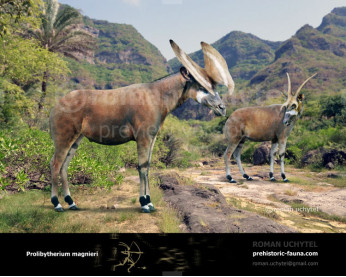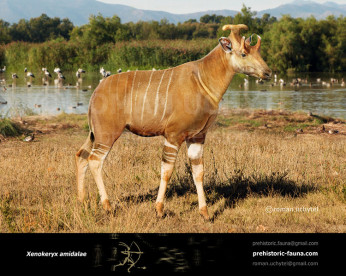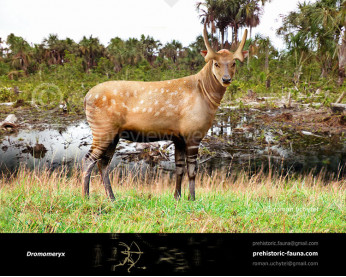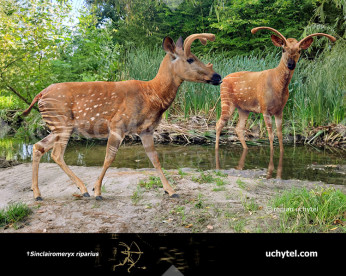Discokeryx
2842428424
Discokeryx (†Discokeryx (Wang et al, 2022))
Order: Artiodactyla
Family: †Prolibytheriidae
Time period: the Early Miocene of Asia (China ~17-16.9 million years ago).
Dimensions: weight ~150 kg
Typical representative: Discokeryx xiezhi
Discokeryx is an extinct genus of even-toed ungulates, possibly related to the modern giraffe and okapi. This animal had a thick-boned cranium which had disk-shaped headgear located in the middle of the head, cervical vertebrae with thickened centra, and the most complicated head-neck joints in any mammal known at the time of its discovery in 2022. These adaptations were for head-butting behavior between males, comparable to the behaviors of rams and musk-oxen as well as the neck-blowing in modern male giraffes. The neck adaptations of Discokeryx help scientists to better understand the triggers for the evolution of the necks of giraffoids.
Compared to extant head-butting animals such as rams and musk-oxen, D. xiezhi had the most optimized head-butting adaptations of all, with a skull that protected the brain more efficiently than other head-butting mammals. Tooth enamel isotopes indicate that the species was an open-land grazer which drank from multiple sources of water, and that their habitats included areas that other contemporary mammals were not adapted to make use of like D. xiezhi could. Fossilized remains of this animal were discovered in the Halamagai Formation located in northwest China.
Оплата
У Вас є кілька зручних способів купівлі зображення: кредитна чи дебетова картка Visa, Mastercard, Maestro; PayPal або банківський переказ
Discokeryx (†Discokeryx (Wang et al, 2022))
Order: Artiodactyla
Family: †Prolibytheriidae
Time period: the Early Miocene of Asia (China ~17-16.9 million years ago).
Dimensions: weight ~150 kg
Typical representative: Discokeryx xiezhi
Discokeryx is an extinct genus of even-toed ungulates, possibly related to the modern giraffe and okapi. This animal had a thick-boned cranium which had disk-shaped headgear located in the middle of the head, cervical vertebrae with thickened centra, and the most complicated head-neck joints in any mammal known at the time of its discovery in 2022. These adaptations were for head-butting behavior between males, comparable to the behaviors of rams and musk-oxen as well as the neck-blowing in modern male giraffes. The neck adaptations of Discokeryx help scientists to better understand the triggers for the evolution of the necks of giraffoids.
Compared to extant head-butting animals such as rams and musk-oxen, D. xiezhi had the most optimized head-butting adaptations of all, with a skull that protected the brain more efficiently than other head-butting mammals. Tooth enamel isotopes indicate that the species was an open-land grazer which drank from multiple sources of water, and that their habitats included areas that other contemporary mammals were not adapted to make use of like D. xiezhi could. Fossilized remains of this animal were discovered in the Halamagai Formation located in northwest China.

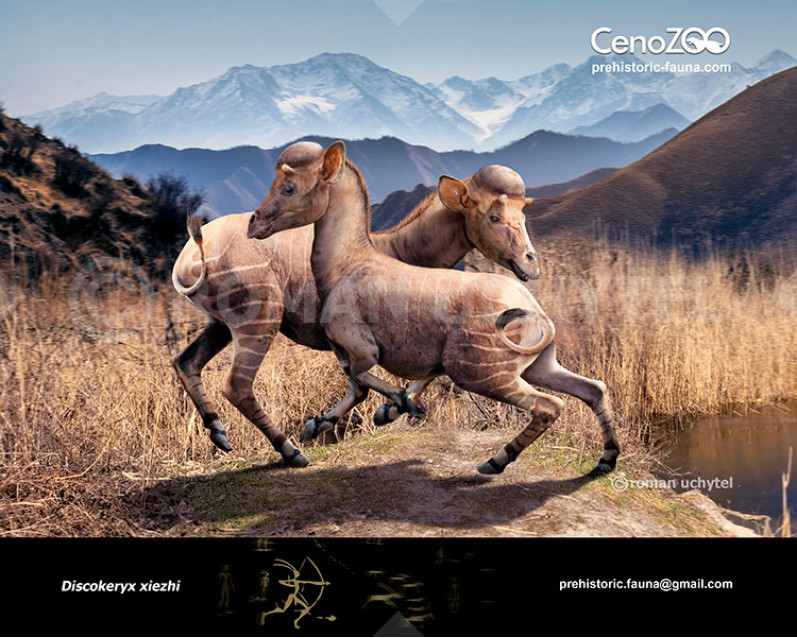
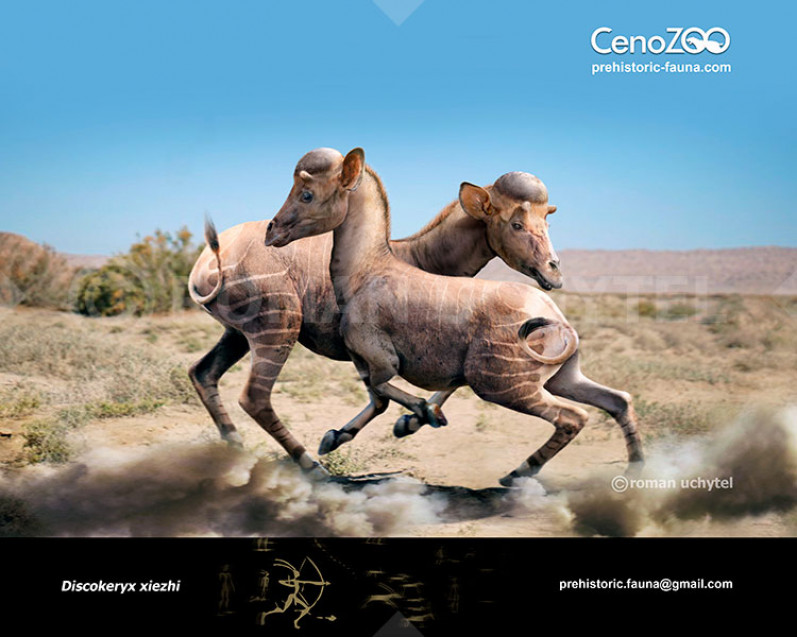
-797x638.jpg)


-70x56.jpg)
-346x277.jpg)
